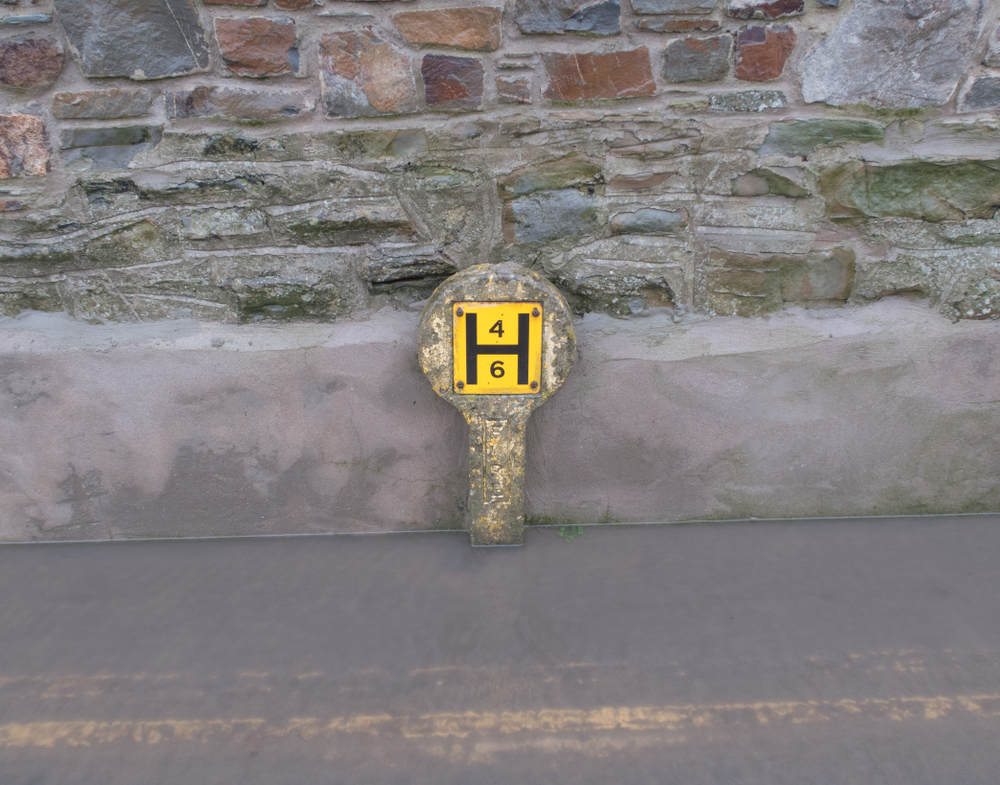You will have seen fire hydrant notices all over but may have never thought about their importance. Fire hydrants are vital when it comes to keeping people safe in the event of a fire which is why it is imperative that they are maintained regularly, kept in perfect working order and why fire hydrant problems should be reported. The following article was published on the Kent Fire & Rescue Service website and looks at the possible issues that may arise with your local fire hydrants…
1. Missing, damaged or covered fire hydrant marker plates
Hydrant marker plates are rectangular yellow signs, with a large black H and a pair of numbers, usually attached to a wall, lamp post or a short concrete post. The two numbers on the plate show the size of the water main and the approximate distance of the hydrant from the plate.
As well as marker plates, all hydrants are also shown on the digital maps available in fire engines, so that the nearest one can be found while firefighters are on their way to an incident. This also means that even if marker plates are missing or broken, the fire service will still be able to find them in most cases, and once reported they will be repaired in due course.
If the marker plate is covered by overgrown grass or plants, residents can help by cutting back any plants or bushes that are covering the hydrant indicator post.
2. Dangerous, missing or cracked hydrant covers and frames
When a fire hydrant cover is missing or cracked, it can expose the hydrant to the elements, which can cause it to freeze and get blocked with mud or silt. This can stop it working when firefighters need it.
3. Leaks from fire hydrants
Most leaks are below ground and not visible, but even leaks on the surface are often not reported due to people assuming someone else will have already reported a problem. Leaks affect water flow and pressure from a fire hydrant, making it less effective if firefighters need to use it. Please report any leaks as soon as they are discovered.
4. Leaks from water supply pipes or mains
Leaks from water supply pipes or mains are the responsibility of the water company but can affect the availability of water from a fire hydrant. The sooner leaks are reported to the water company, the sooner they can fix the problem.
5. Illegal use of fire hydrants
Many problems with fire hydrants are caused by illegal use. It is illegal to use a fire hydrant to obtain water for purposes other than firefighting “unless authorised by the water authority or another person to whom the hydrant belongs” (source: Fire and Rescue Services Act 2004, section 42, subsection 6).
The public can tell the local water companies or the fire service when they suspect illegal use. Key pieces of information such as the registration number and any company names on a vehicle, along with the date, time and location of the activity will be very helpful, but please avoid confrontation with suspected offenders.
6. Parking on or preventing access to a fire hydrant
It is an offence to be parked over or to prevent access to a fire hydrant when it is required for firefighting (source: Fire and Rescue Services Act 2004, section 42, subsection 7). Parking for a short time on a hydrant can occur occasionally, but if this happens repeatedly with the same vehicle it should be reported to the water services team at Kent Fire and Rescue Service.
Please be considerate when parking near a fire hydrant marker post and ask friends, relatives and neighbours to be aware, as this could save time in an emergency.
You can read the full article on fire hydrant problems on the Kent Fire & Rescue.
At Total Safe UK, we carry out Fire Hydrant Testing to ensure fire fighters have access to the tools they need to save lives. If you own a property or business with a fire hydrant, it is your responsibility to ensure it is tested and maintained and to comply with UK regulations, it should be done so by professionals. Contact our team today to find out more about possible fire hydrant problems and the fire hydrant testing services we provide throughout the south east.

